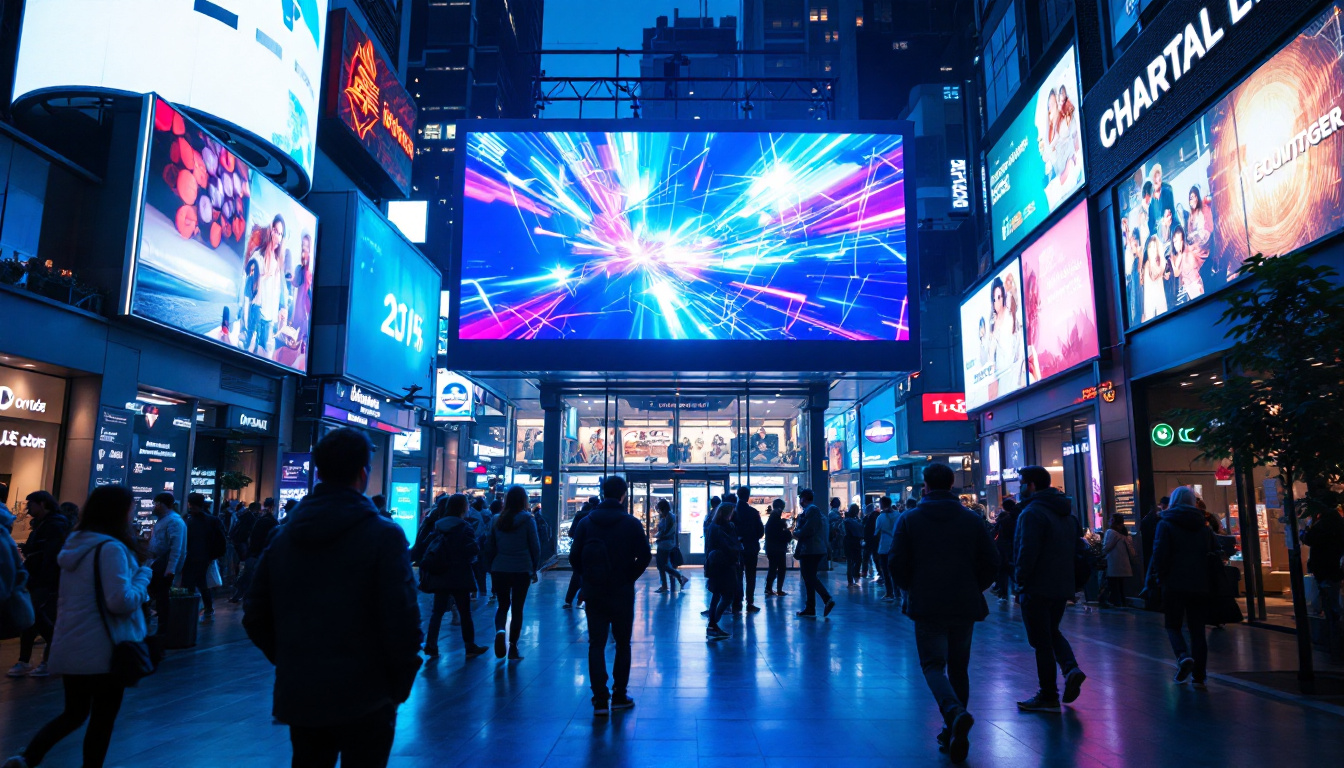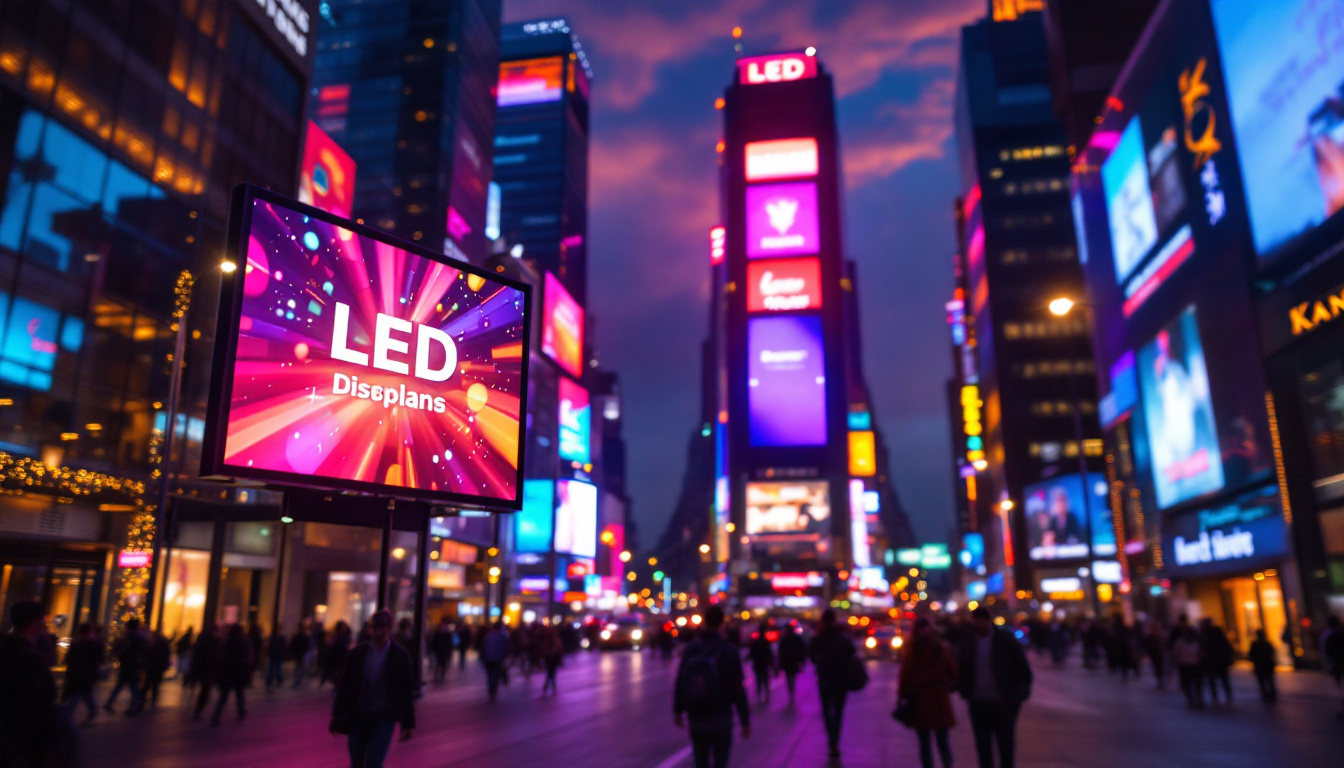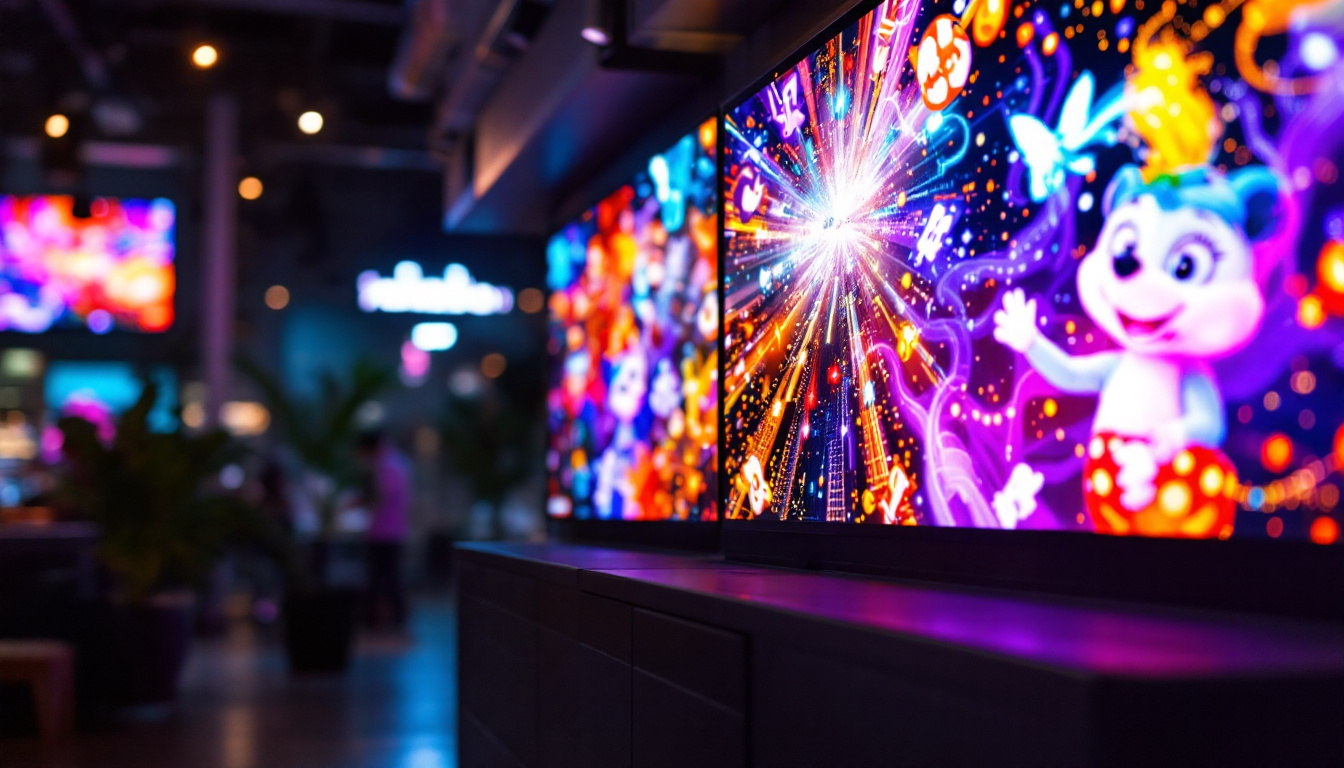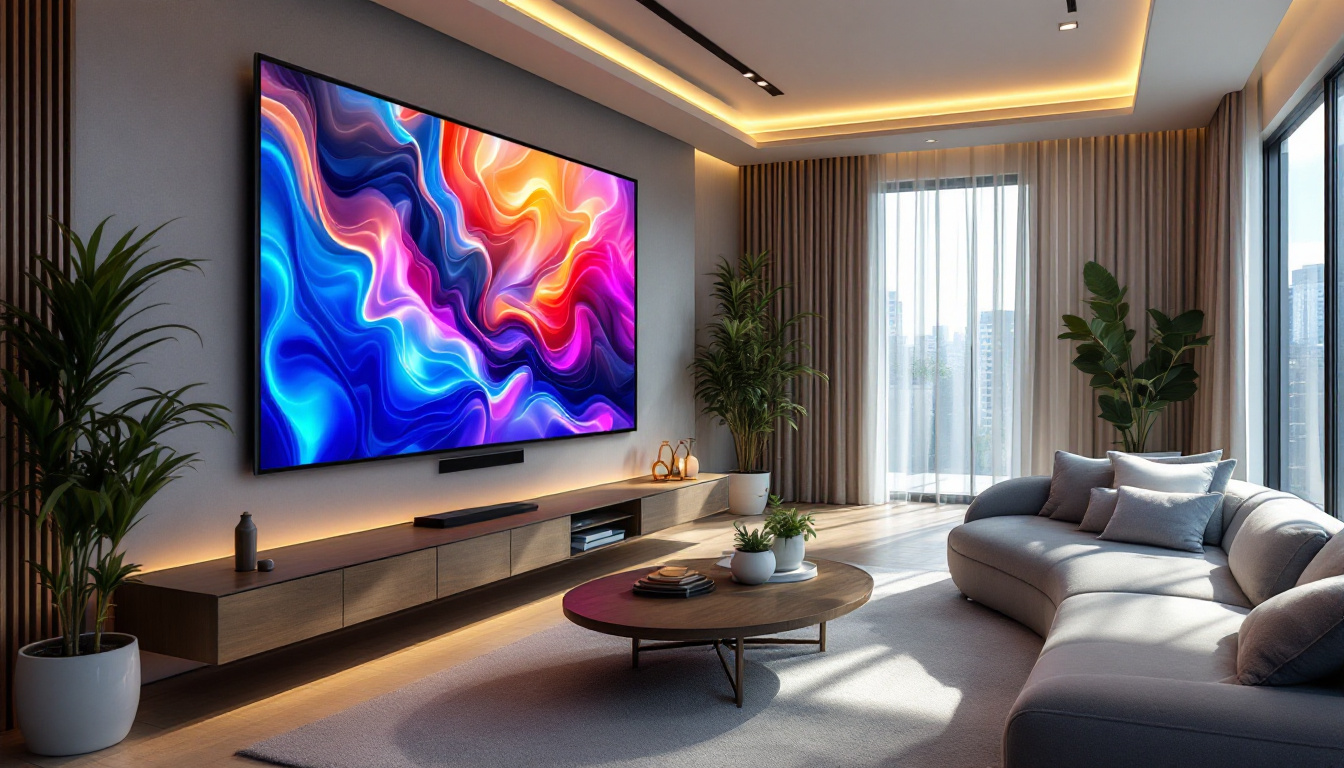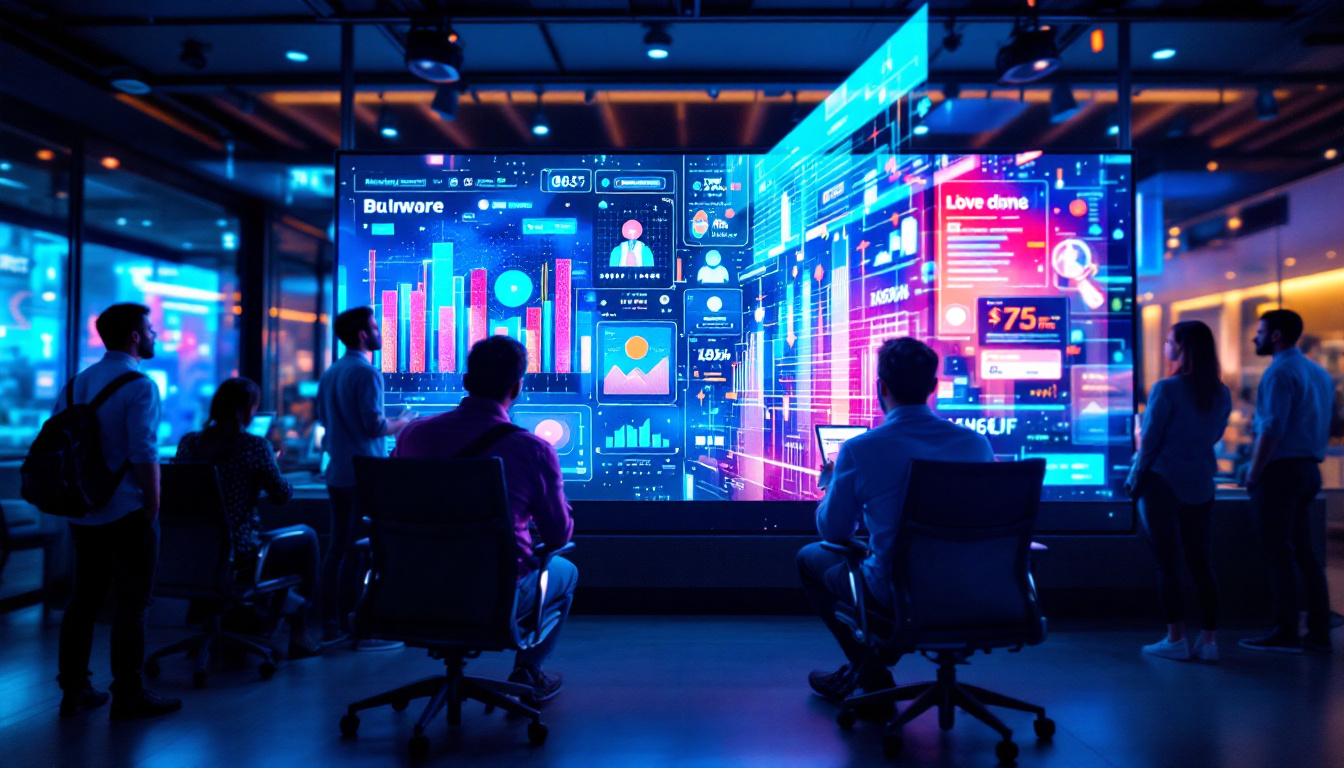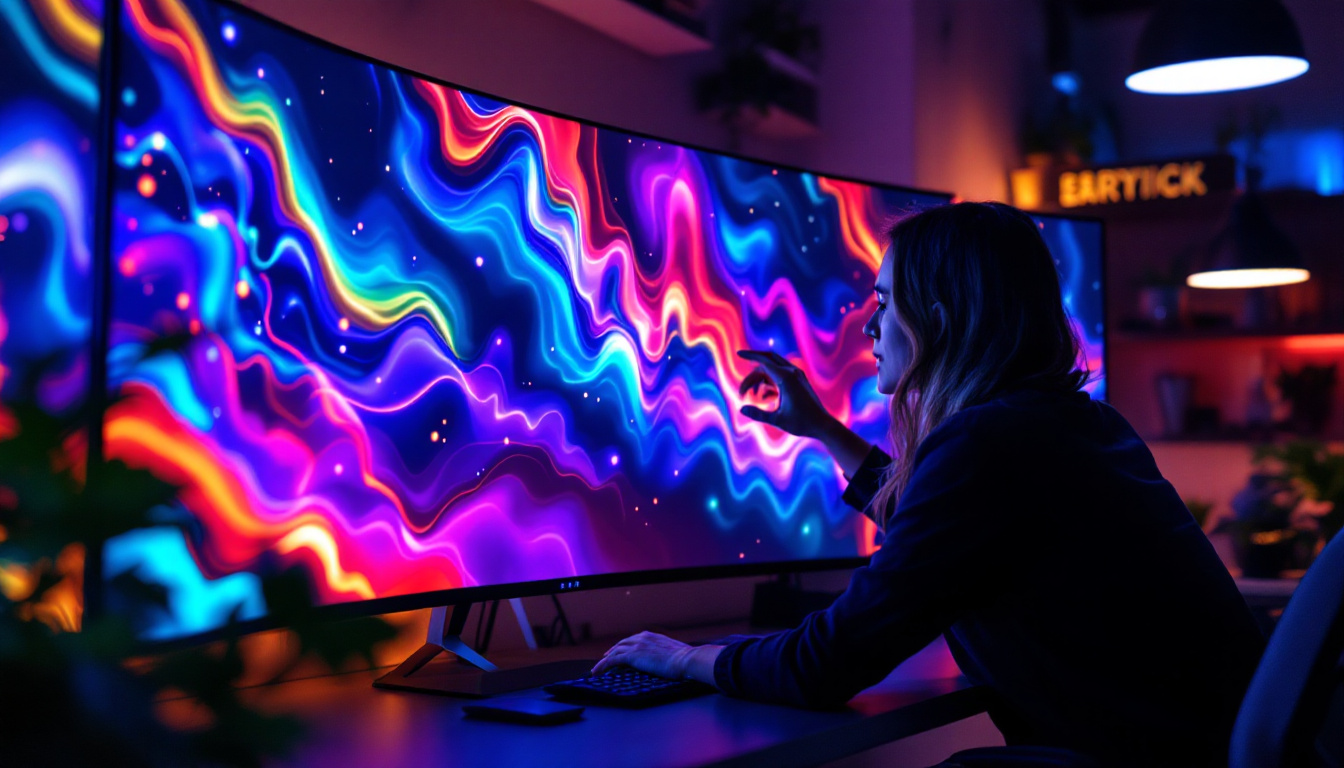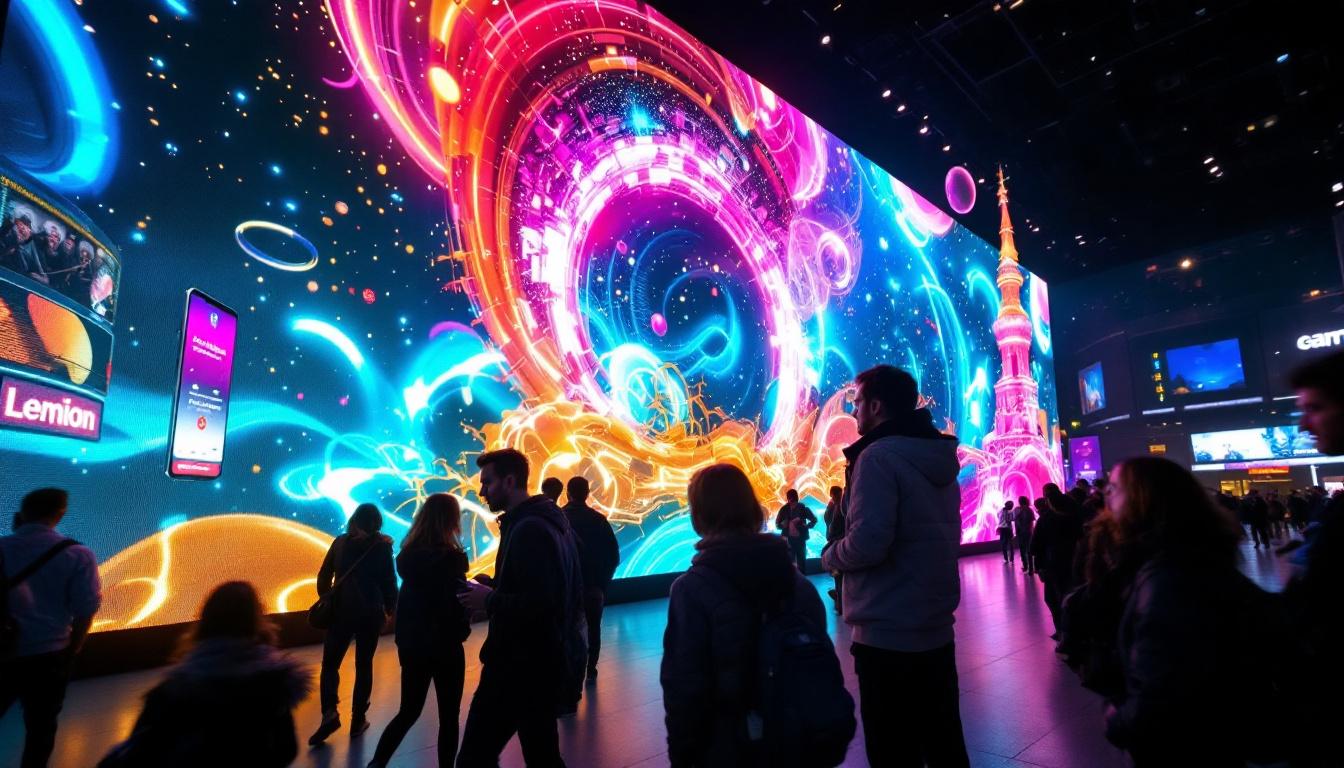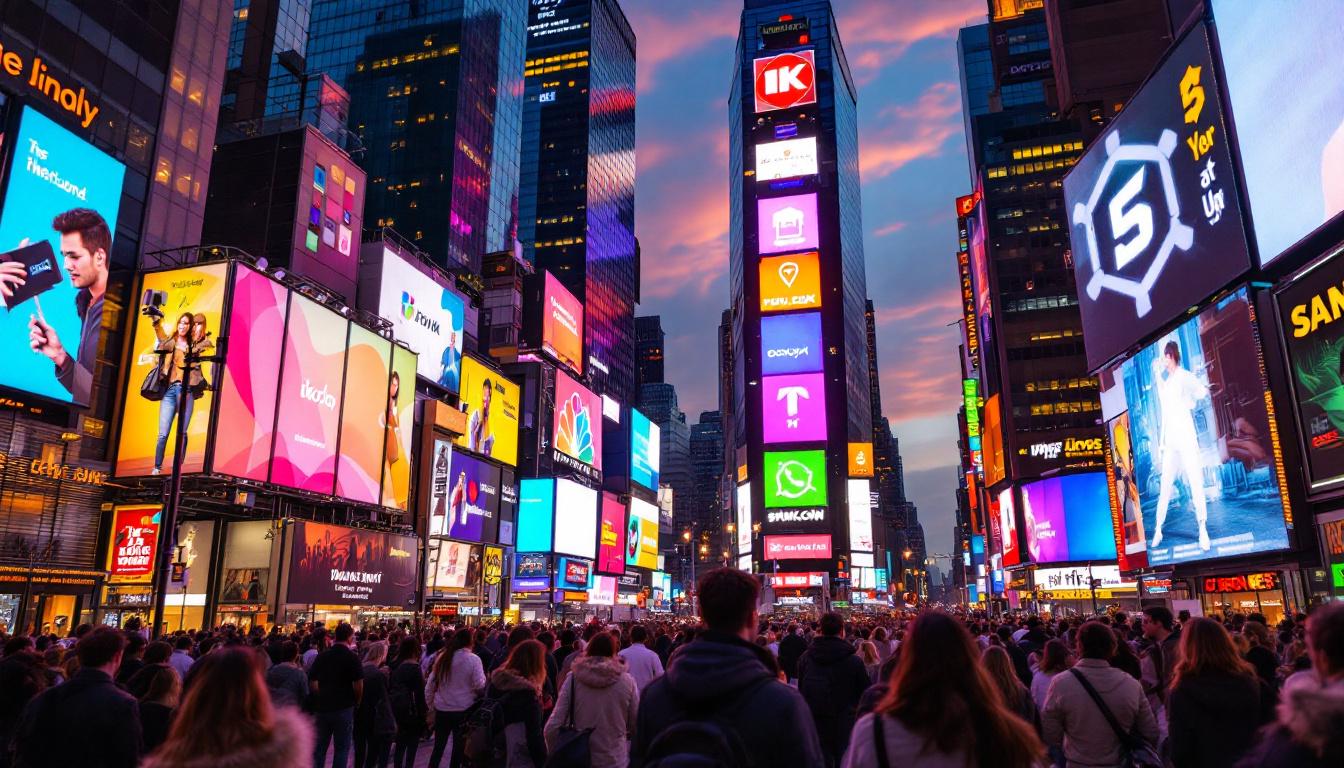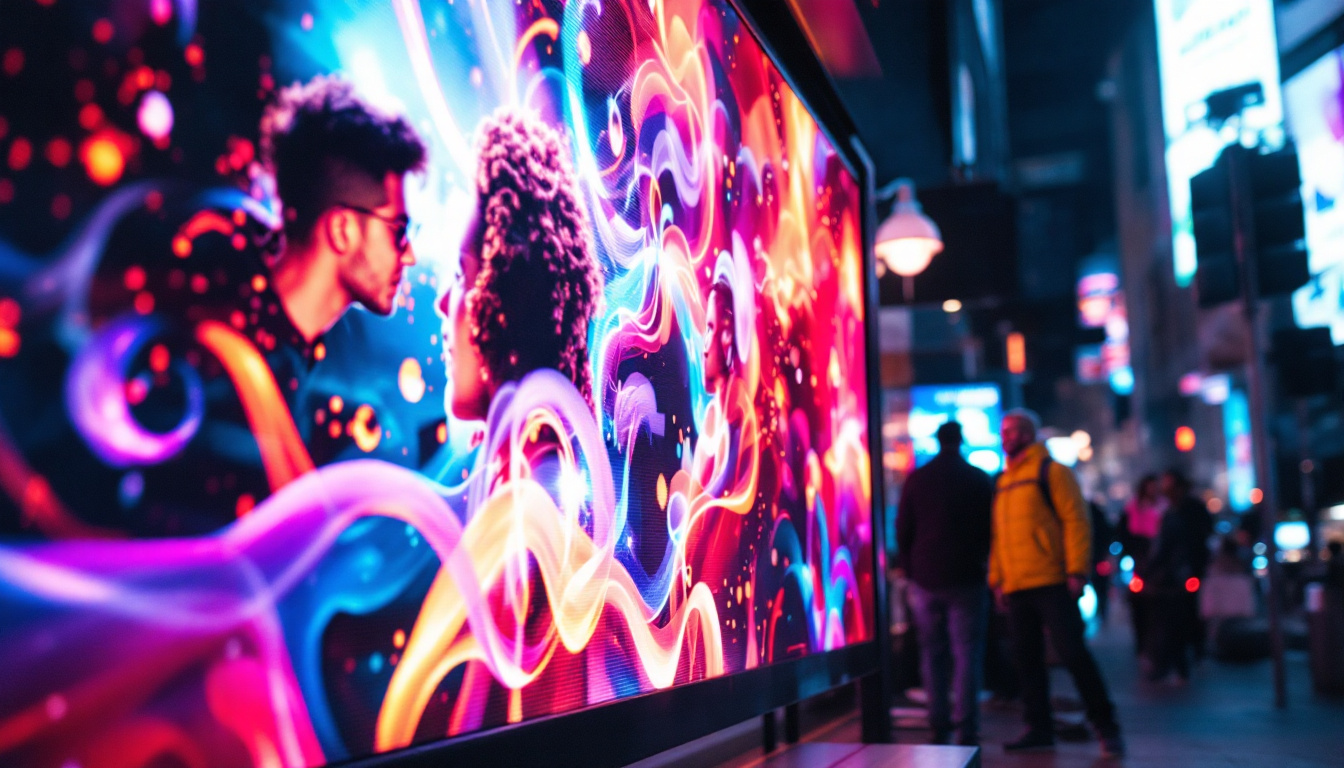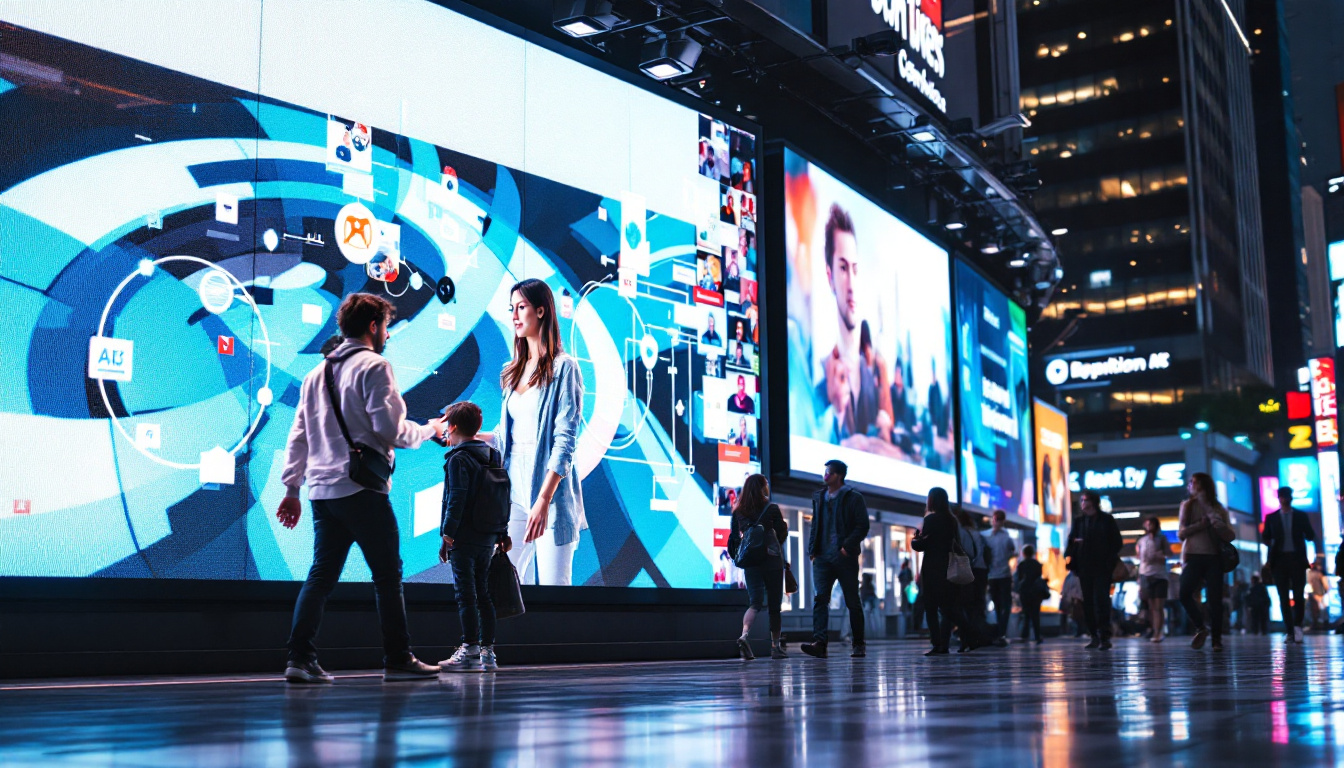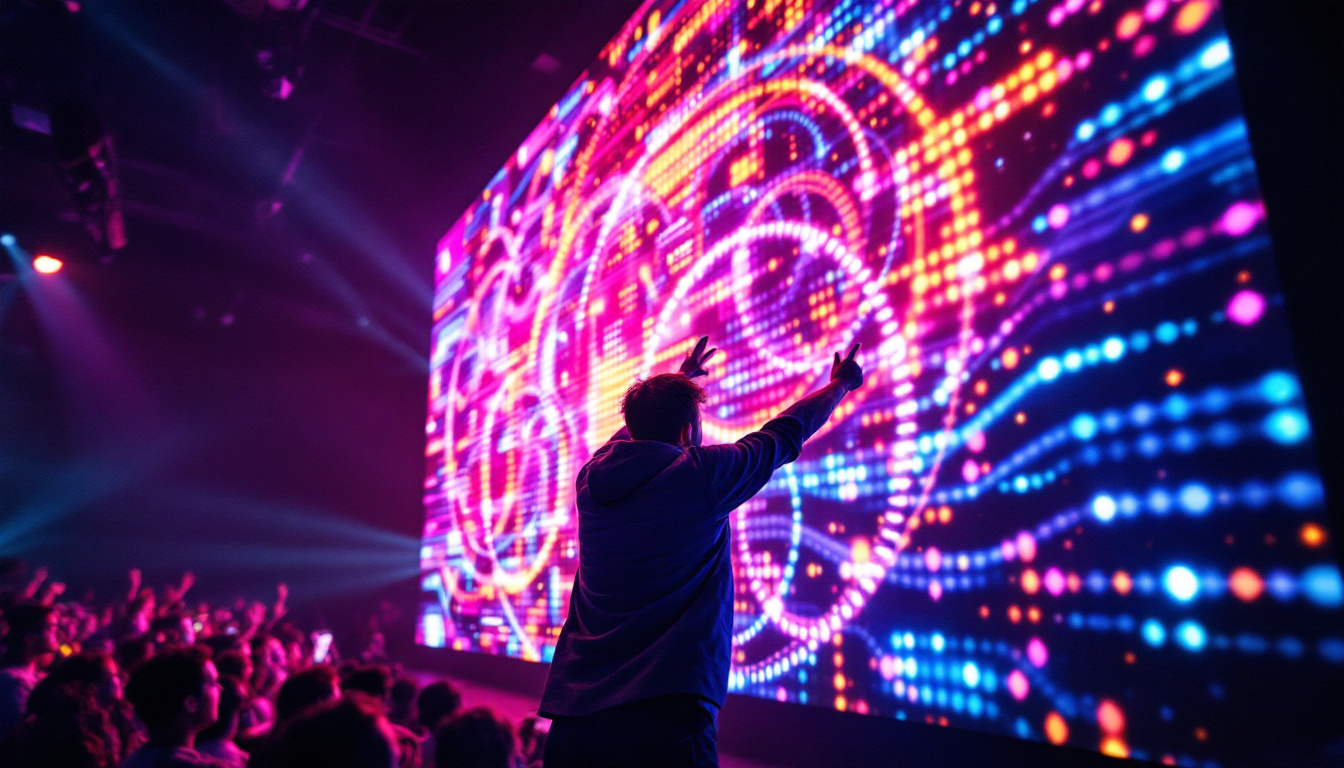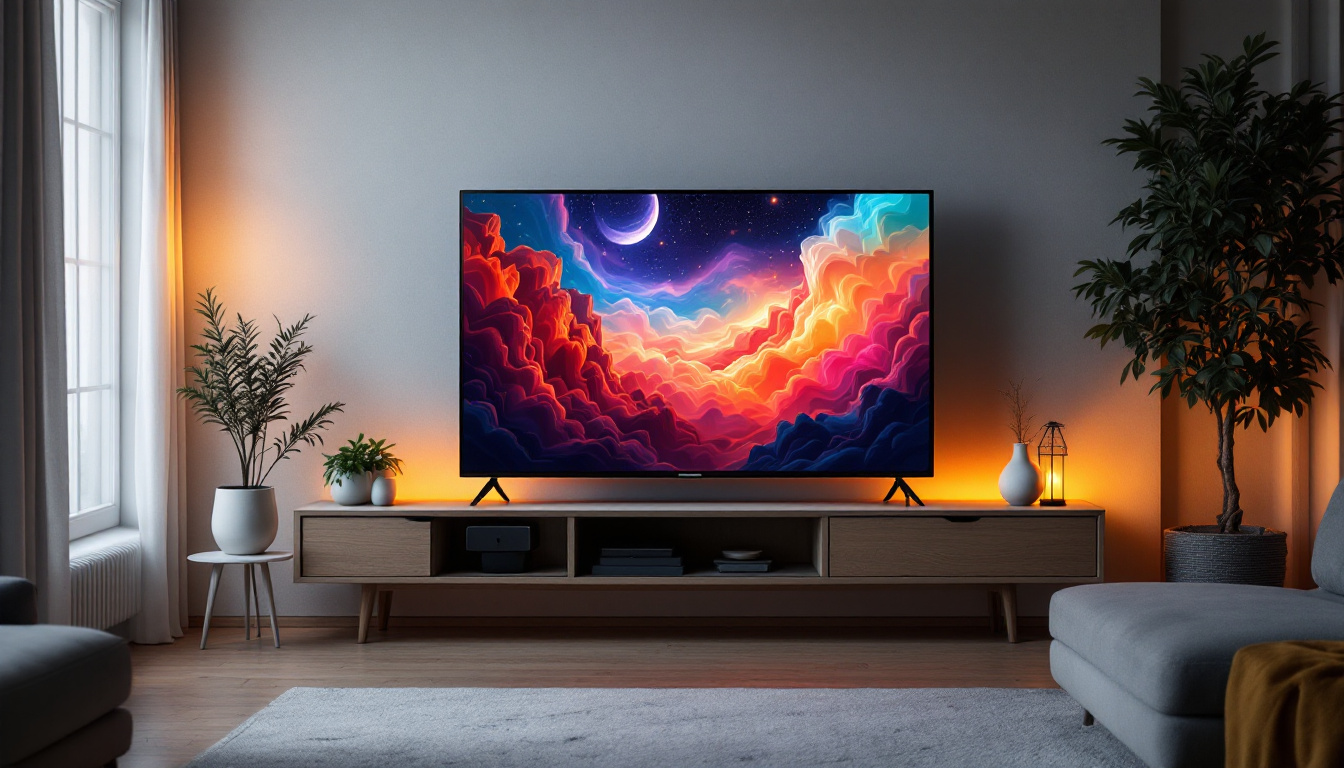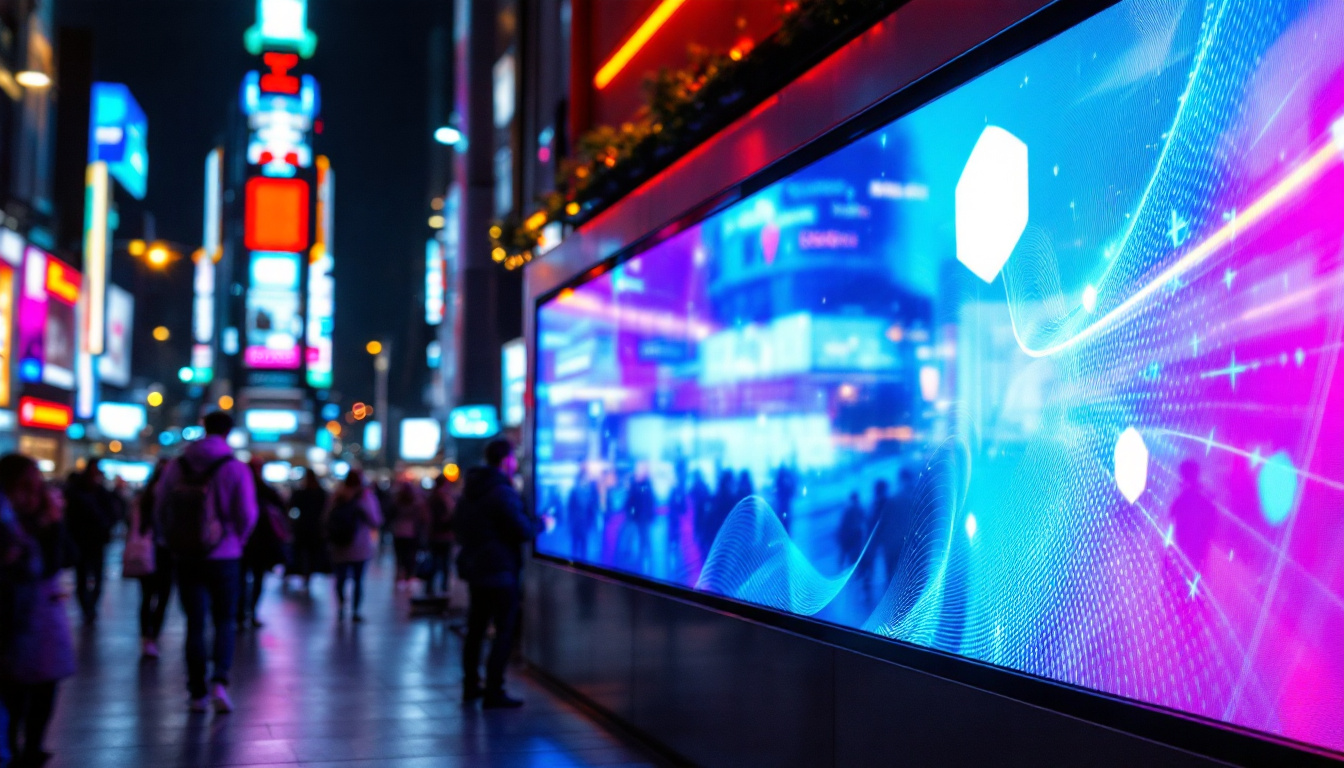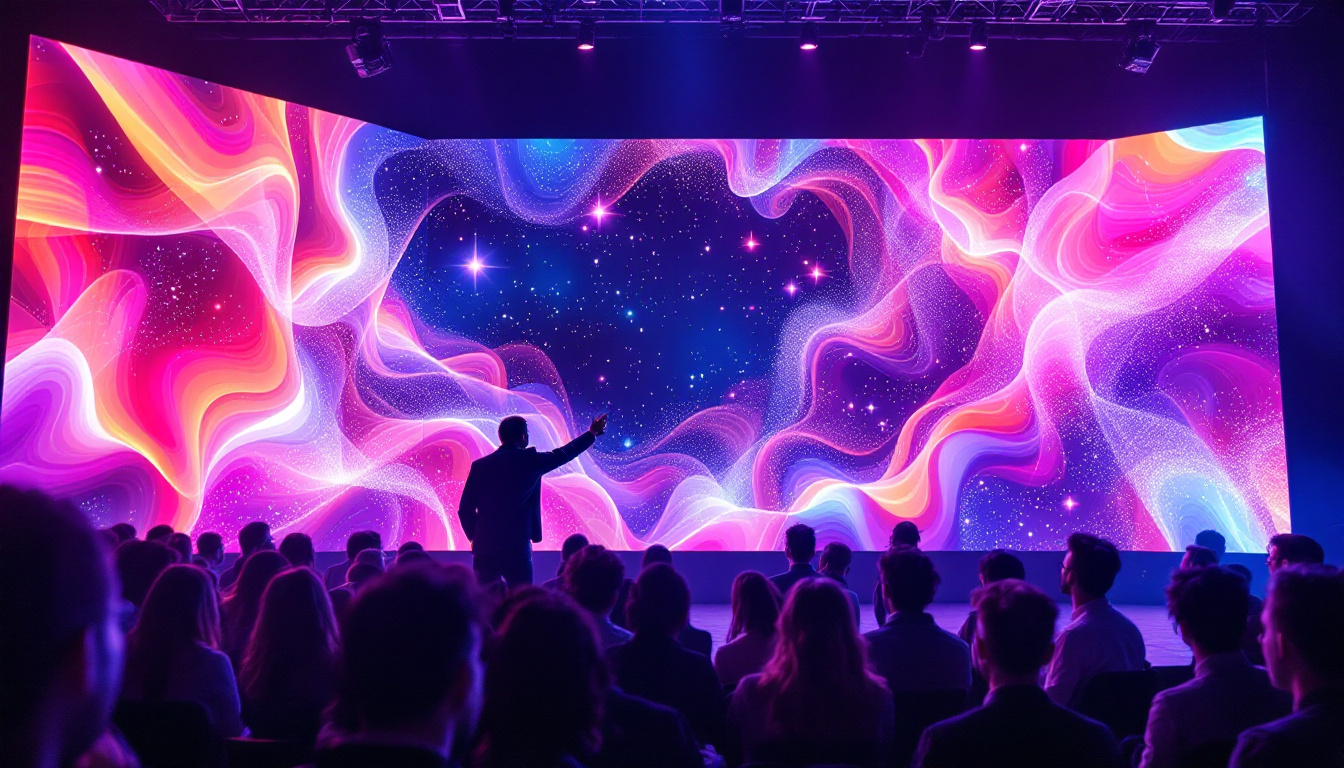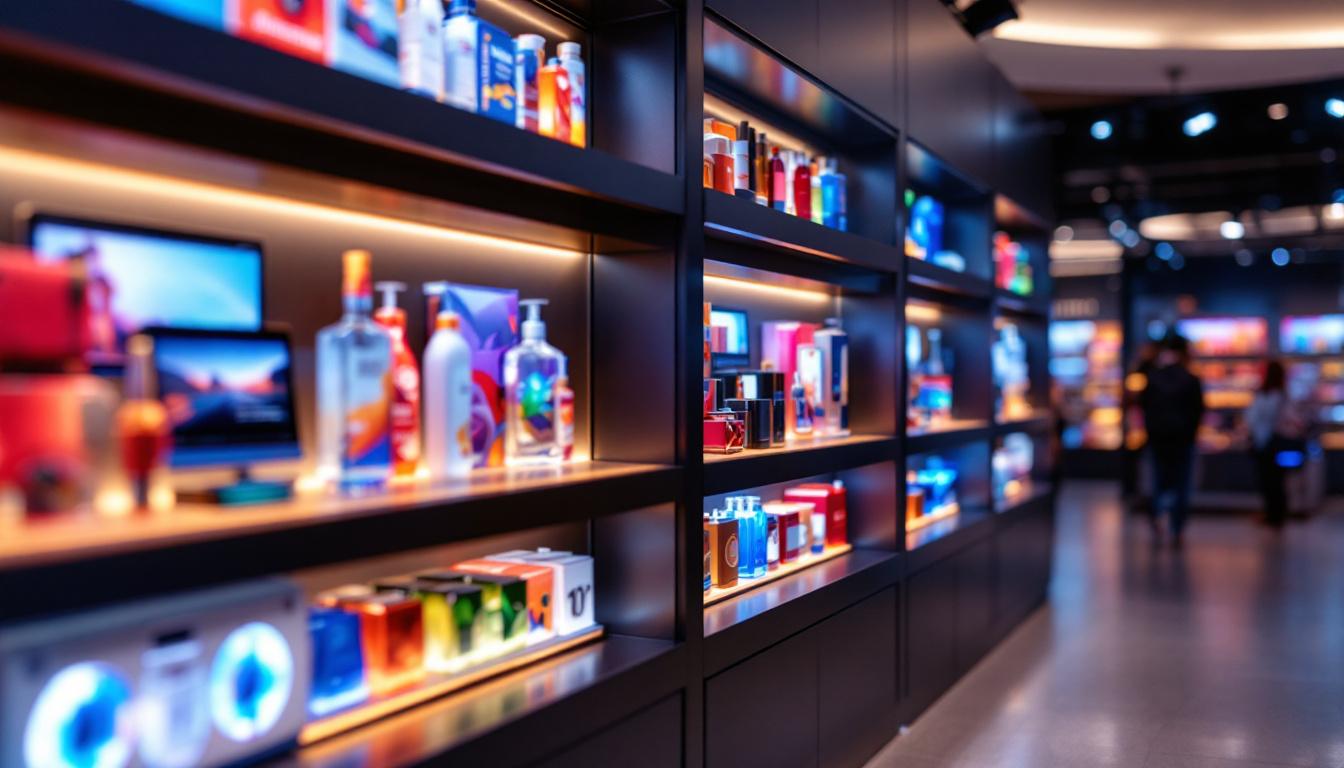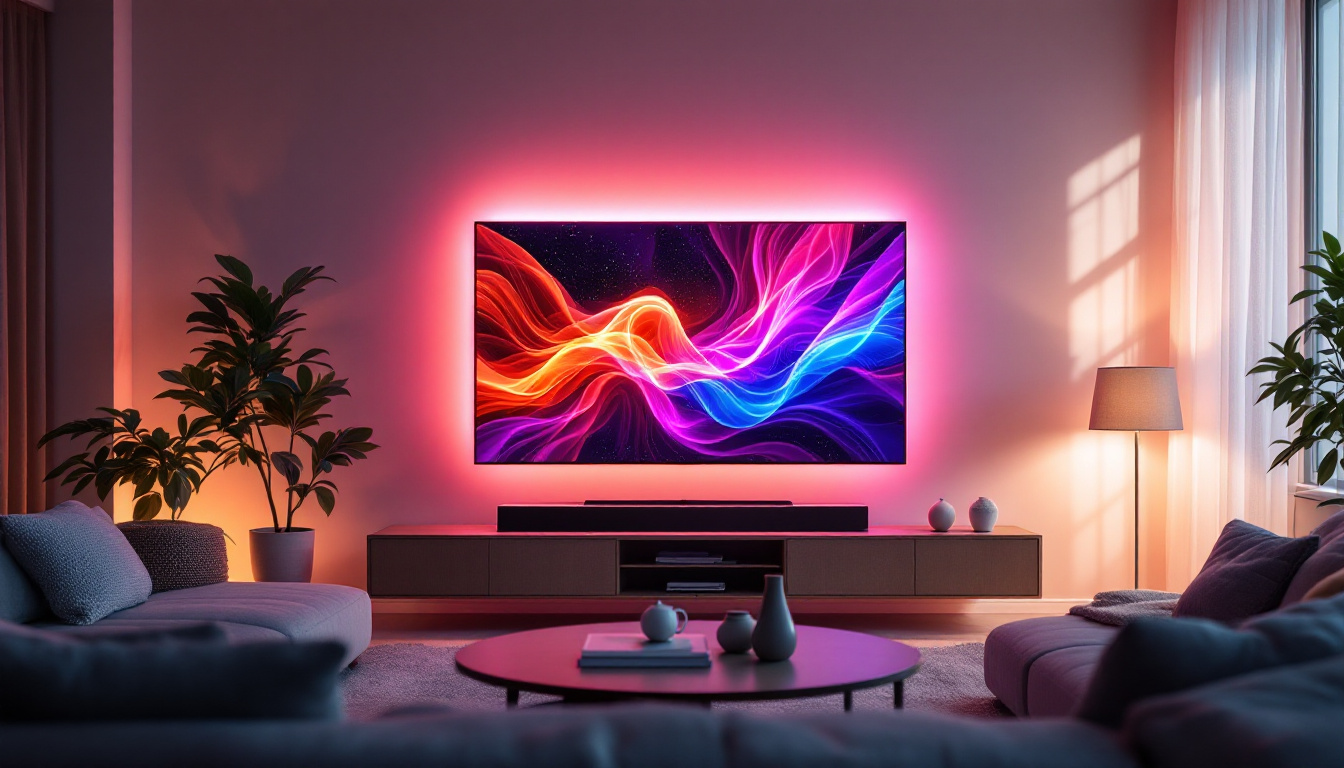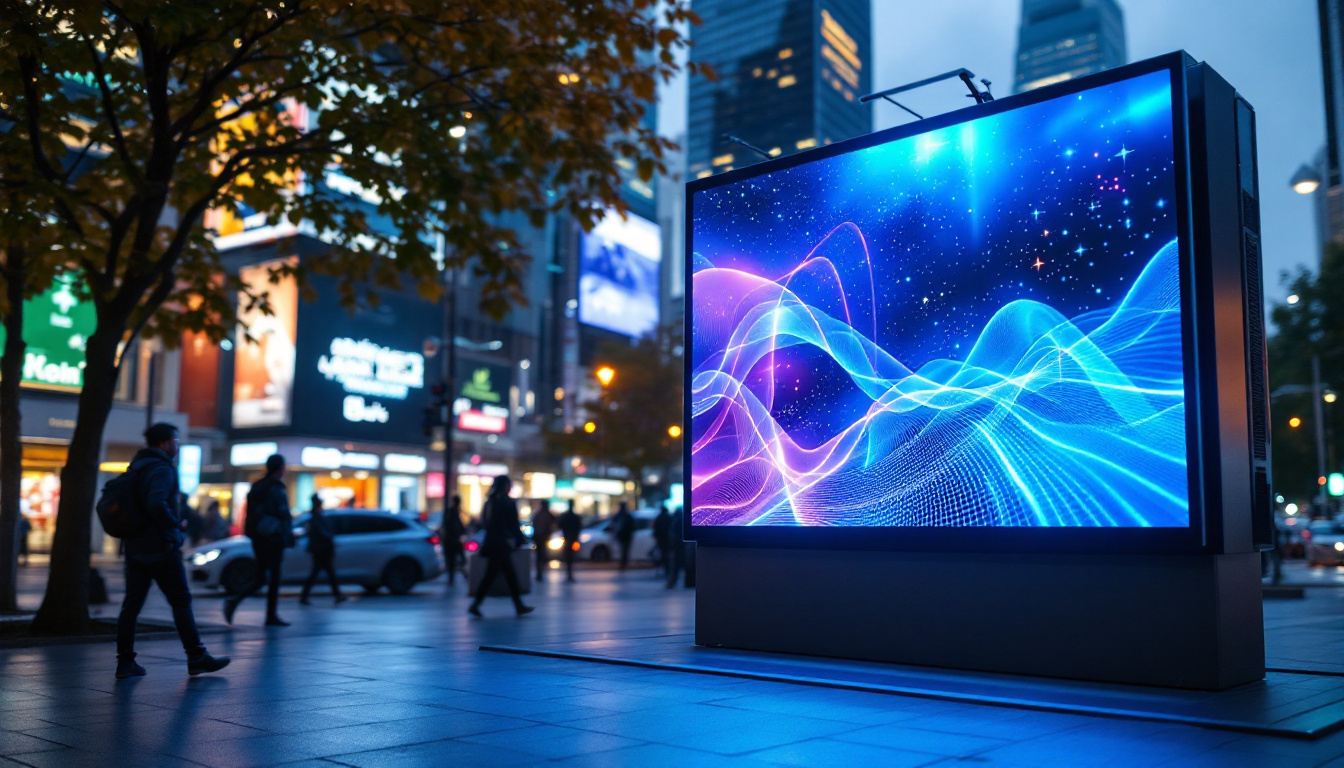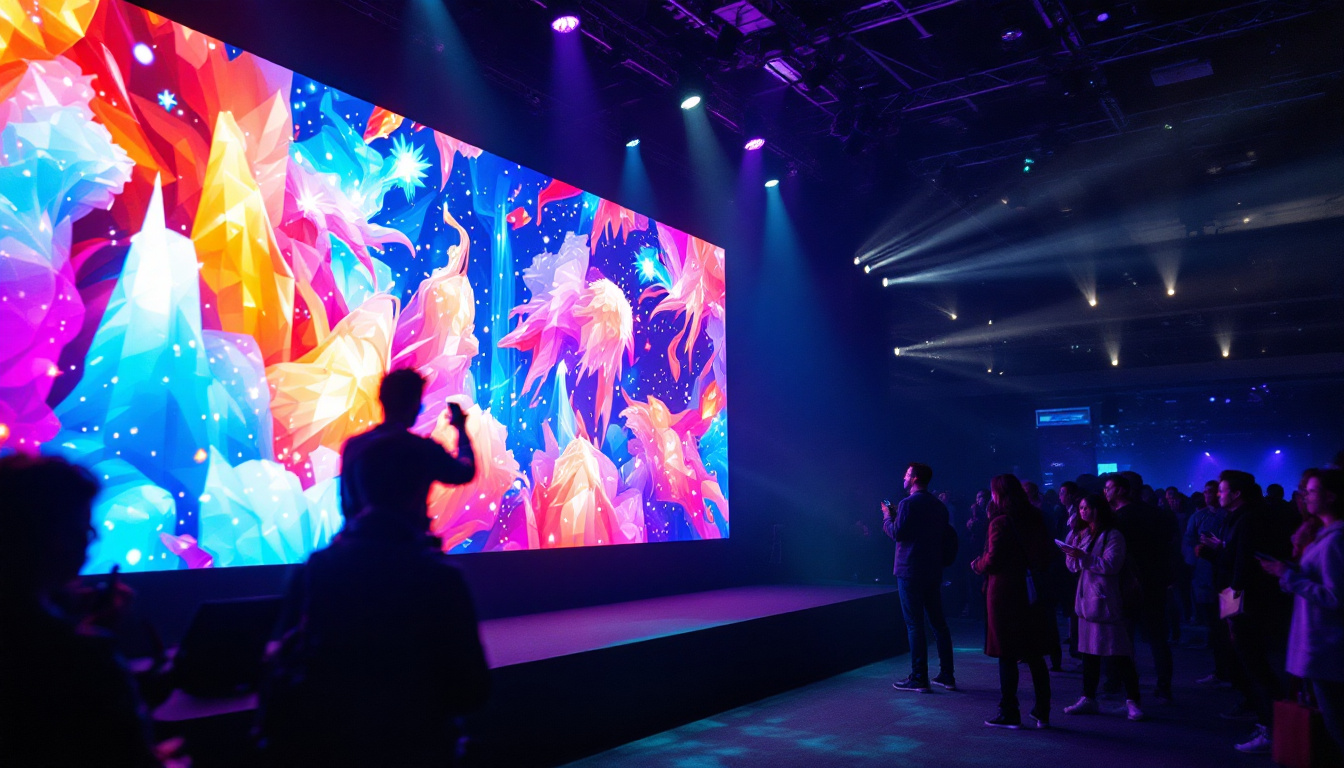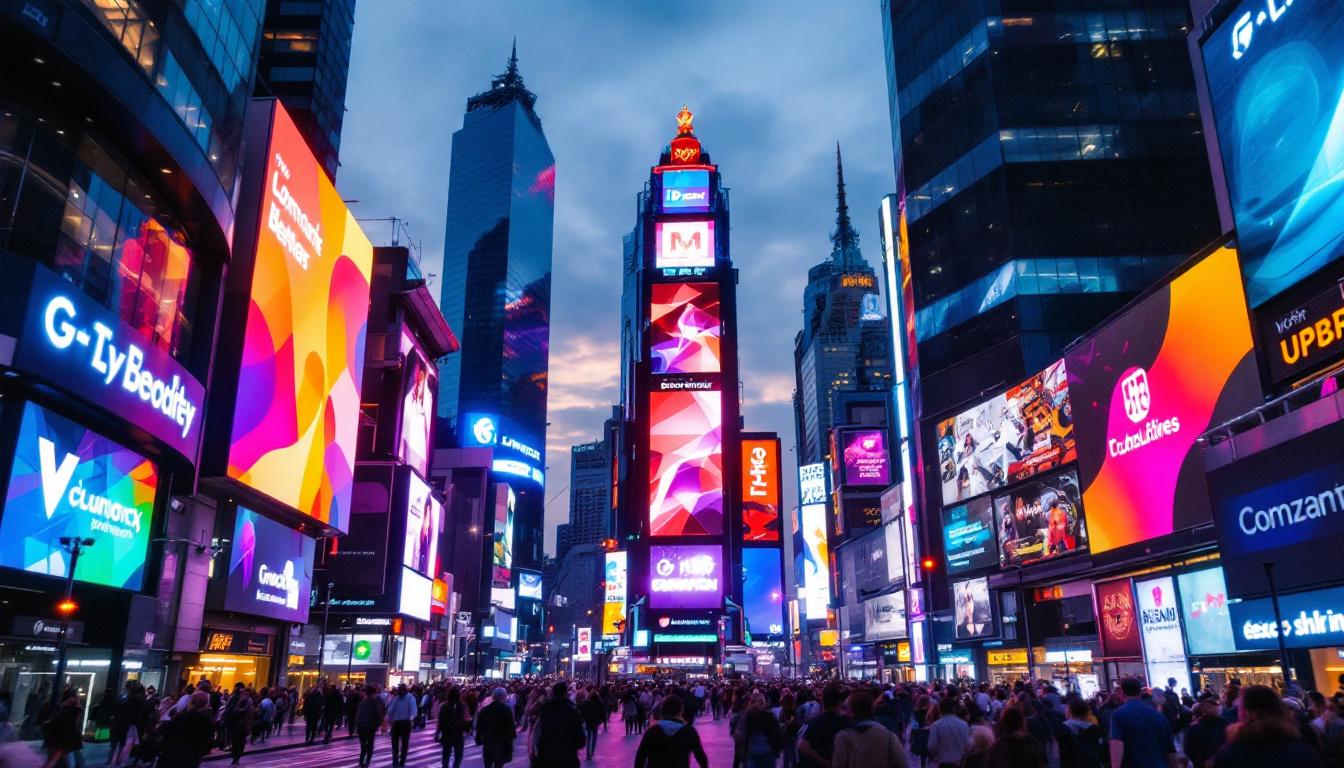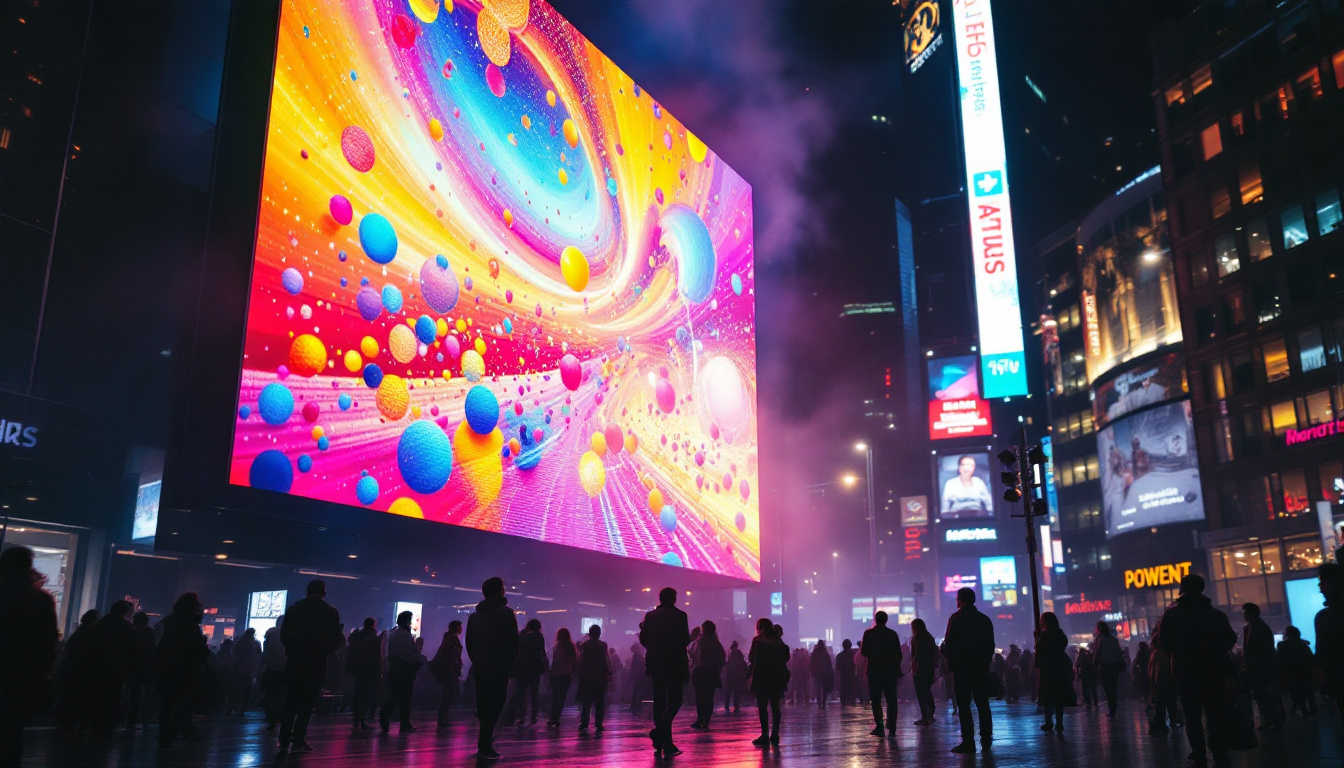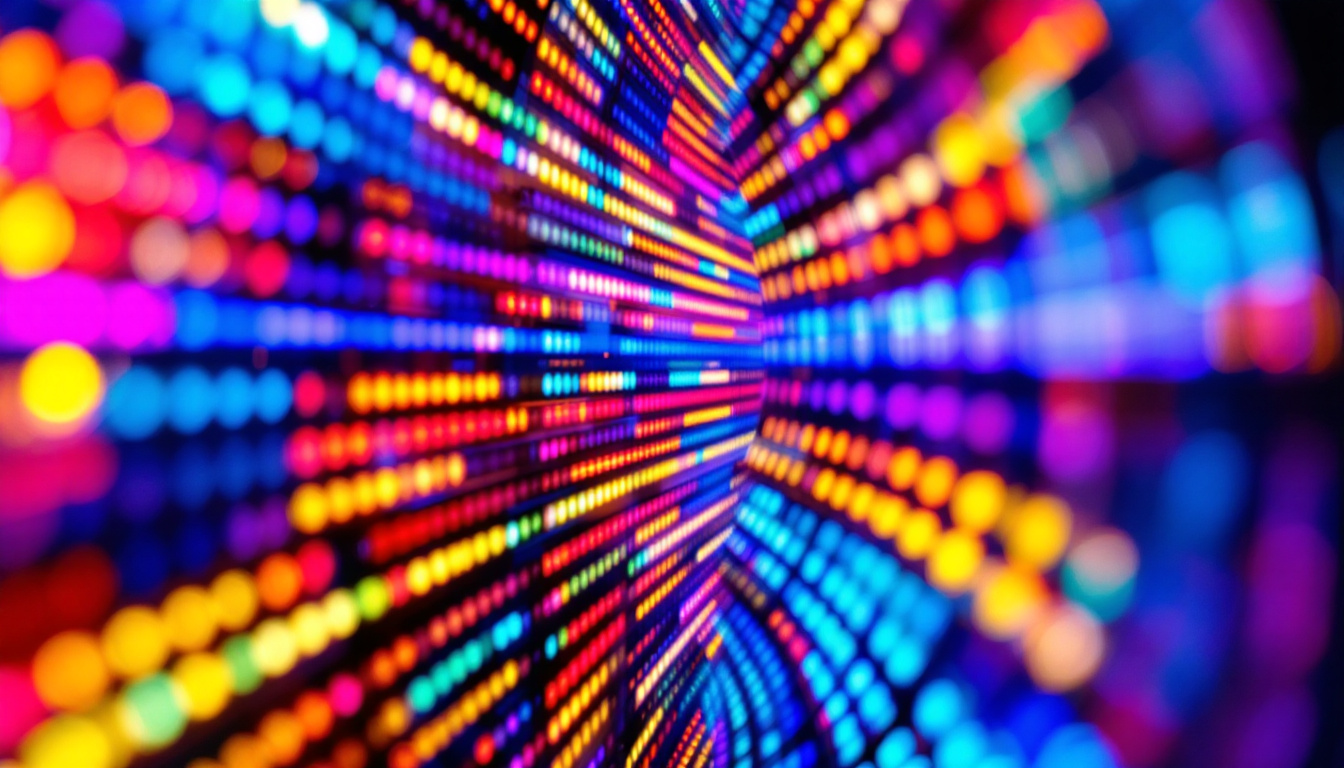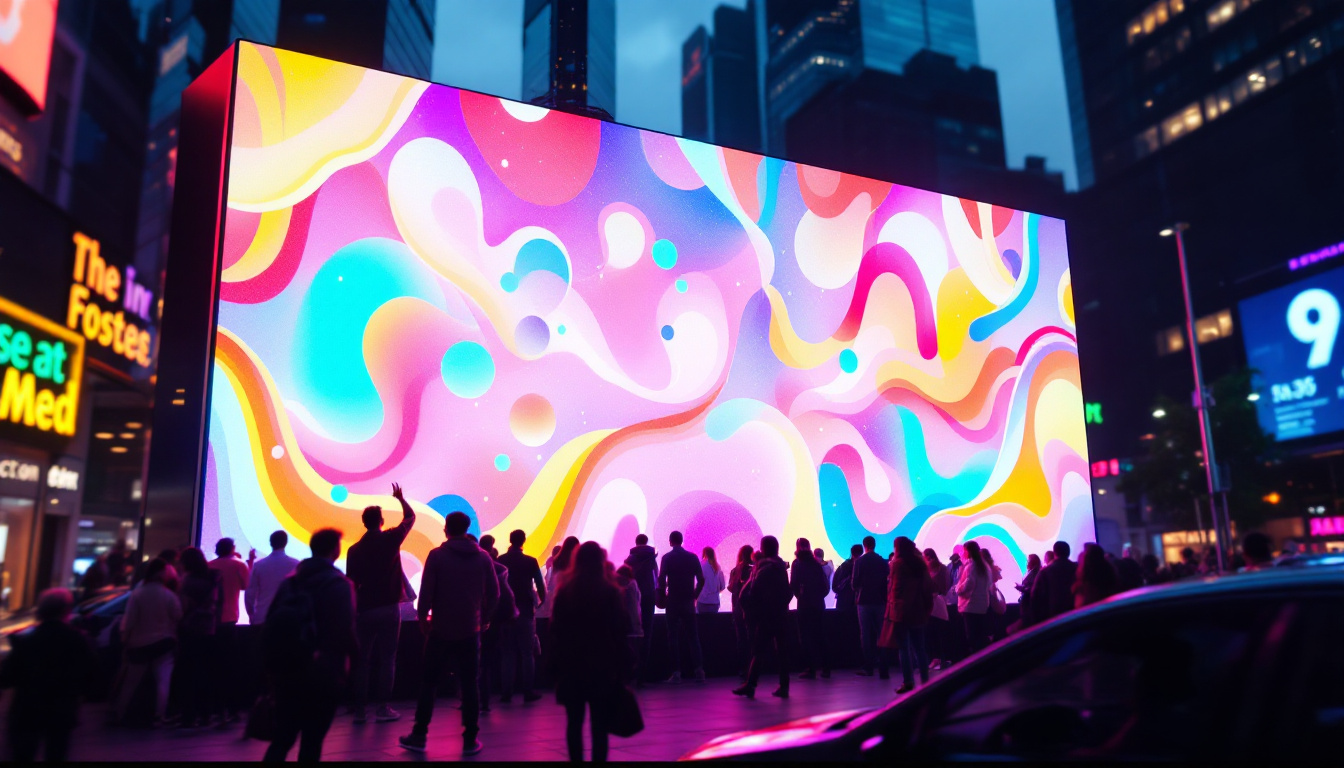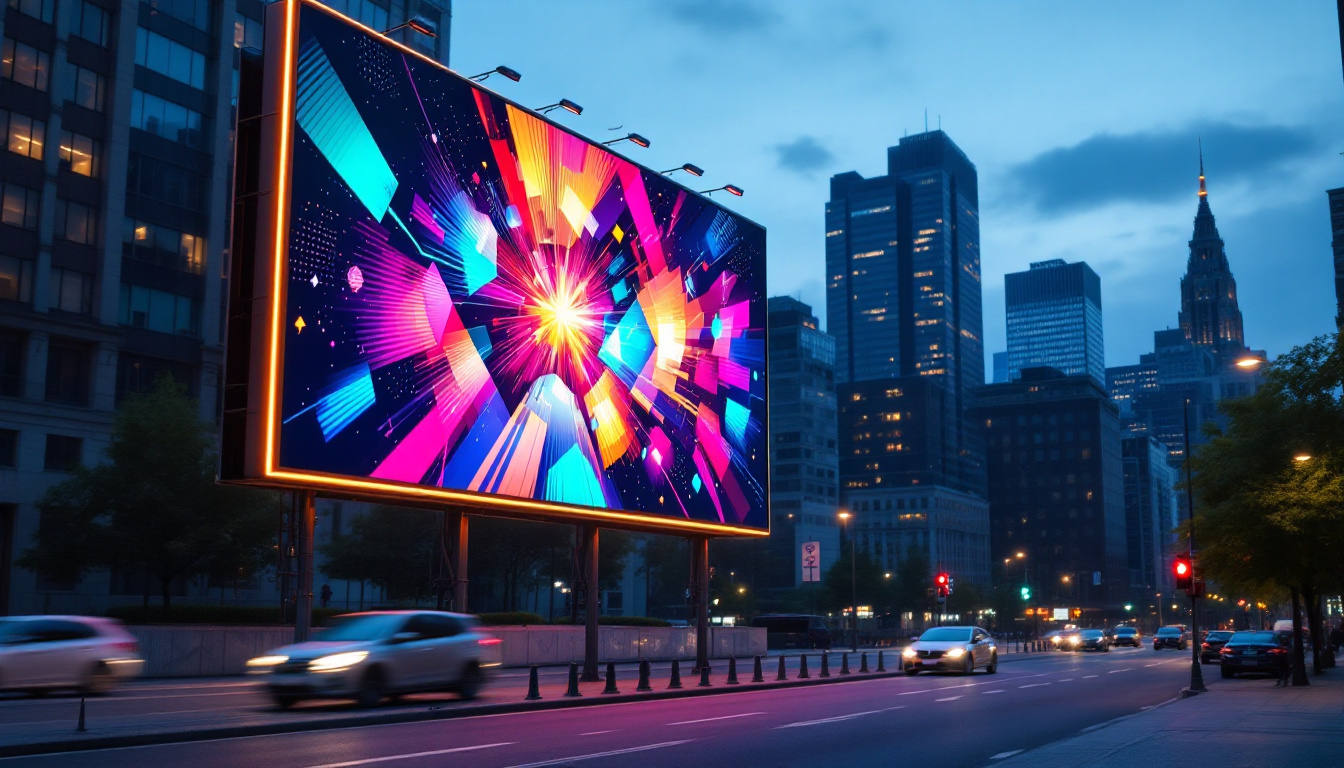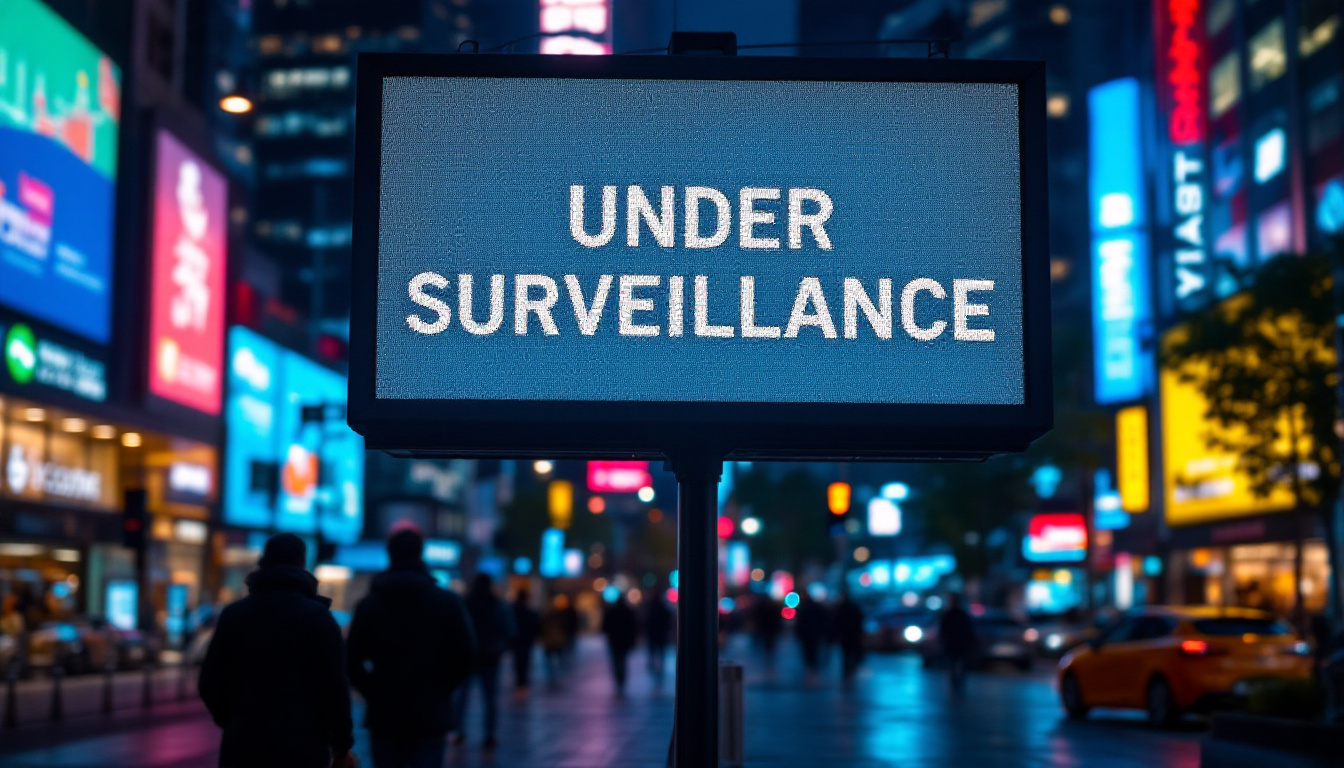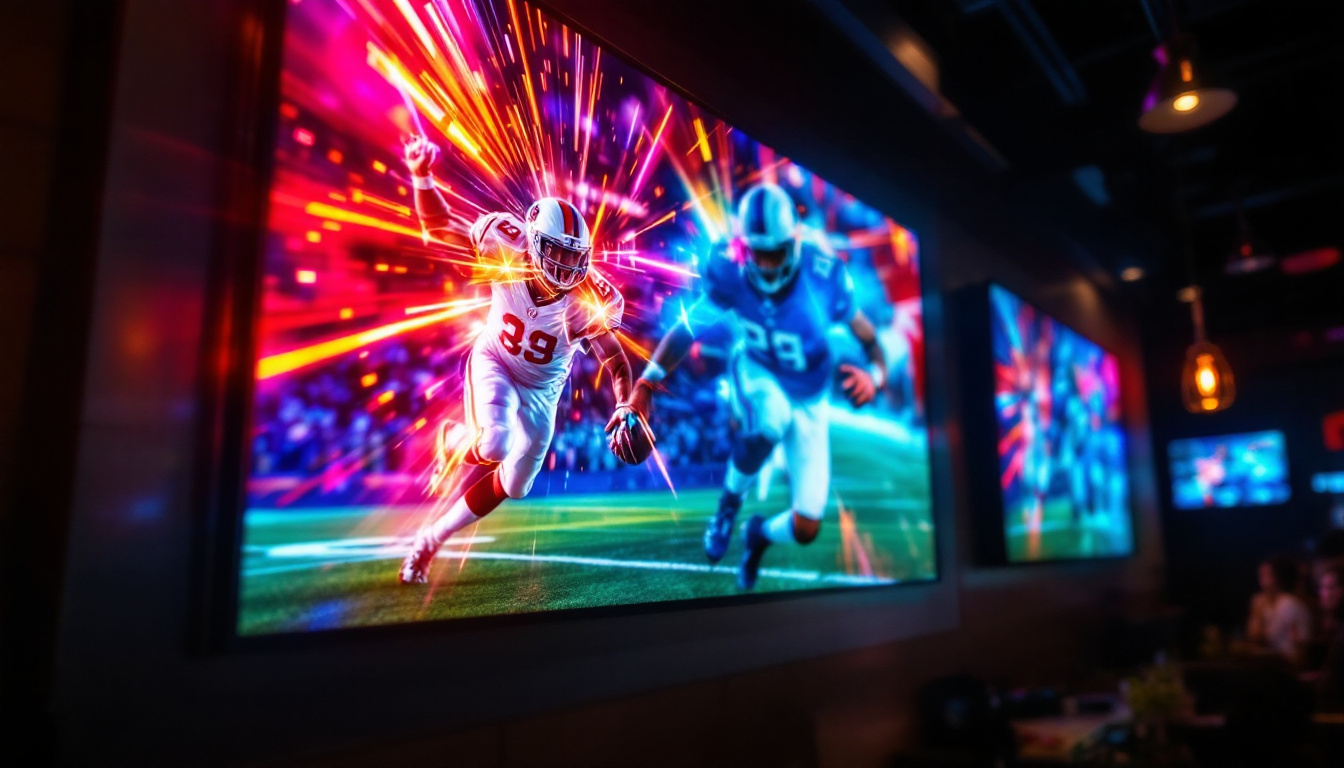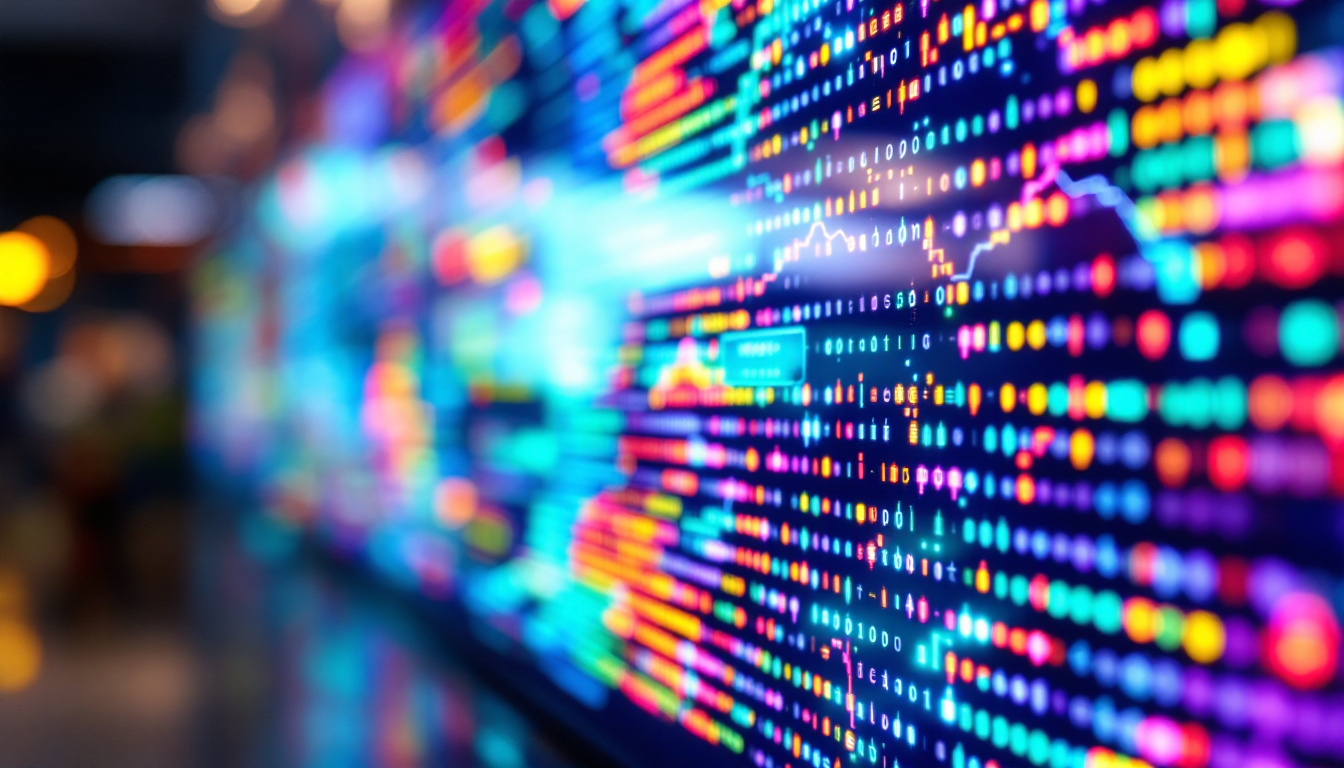In the modern world, visual communication has become an essential aspect of marketing and information dissemination. Among the various tools available, LED signage has emerged as a powerful medium for delivering messages effectively. This article explores the intricacies of LED displays, their advantages, applications, and future trends.
What is LED Signage?
LED signage refers to the use of light-emitting diodes (LEDs) to create dynamic displays for advertising, information sharing, and entertainment. These displays can range from small screens used in retail settings to massive billboards that dominate cityscapes. The versatility and brightness of LED technology make it a preferred choice for many businesses and organizations. In addition to their vibrant visual appeal, LED signs are also capable of displaying animations and videos, which can capture the attention of passersby more effectively than static signs. This capability allows businesses to convey messages that are not only informative but also engaging, making LED signage a powerful tool in modern marketing strategies.
Understanding LED Technology
LED technology is based on semiconductor devices that emit light when an electric current passes through them. Unlike traditional lighting methods, LEDs are energy-efficient and have a longer lifespan. This technology allows for vibrant colors and high contrast, making LED displays visually striking. Furthermore, the low heat emission of LEDs reduces the risk of overheating, which enhances safety and allows for more creative display designs. As a result, businesses can create eye-catching installations that not only attract customers but also maintain operational efficiency.
Types of LED Displays
There are several types of LED displays, each designed for specific applications. The most common types include:
- Indoor LED Displays: These are typically used in shopping malls, airports, and conference centers. They are designed for close viewing and often feature high-resolution images. Indoor displays can also be integrated with interactive technology, allowing users to engage with the content through touch or motion sensors.
- Outdoor LED Displays: Built to withstand various weather conditions, outdoor displays are larger and often used for advertising on highways or in public squares. These displays are designed with protective casings and advanced weatherproofing techniques to ensure durability and longevity, even in harsh environments.
- Mobile LED Displays: These are mounted on vehicles and can be transported to different locations for events or promotions. Mobile displays offer flexibility and can reach diverse audiences, making them ideal for festivals, parades, and sporting events.
Additionally, there are specialized LED displays such as transparent LED screens, which allow for visibility through the display while still showcasing vibrant content. These innovative screens are often used in retail environments to create stunning visual merchandising displays that do not obstruct the view of products behind them. As technology continues to evolve, the applications for LED signage expand, leading to new possibilities in advertising and communication strategies.
The Advantages of LED Signage
LED signage offers numerous benefits that make it an attractive option for businesses and organizations. Understanding these advantages can help in making informed decisions about visual communication strategies.
Energy Efficiency
One of the most significant advantages of LED displays is their energy efficiency. Compared to traditional incandescent bulbs, LEDs consume significantly less power, which can lead to lower operational costs. This efficiency not only benefits the environment but also allows businesses to allocate resources more effectively. Moreover, the reduced energy consumption contributes to a smaller carbon footprint, aligning with the growing trend of sustainability among consumers and businesses alike. As more organizations strive to meet eco-friendly standards, adopting LED technology can enhance their reputation as environmentally responsible entities.
Longevity and Durability
LEDs have a longer lifespan compared to other lighting technologies. An LED display can last up to 100,000 hours, which means less frequent replacements and maintenance. Additionally, they are more durable and resistant to shock and vibrations, making them ideal for both indoor and outdoor use. This durability is particularly beneficial for businesses that operate in challenging environments, such as construction sites or outdoor events, where traditional signage may suffer damage. Furthermore, the low maintenance requirements of LED signage can free up valuable time and resources, allowing staff to focus on other critical aspects of their operations.
High Visibility and Brightness
LED displays are known for their exceptional brightness, which makes them easily visible even in direct sunlight. This high visibility ensures that messages reach a wider audience, making them effective for advertising and information dissemination. The vibrant colors and high contrast levels also enhance the visual appeal of the content displayed. In addition to their brightness, many LED displays come equipped with advanced technology that allows for dynamic content changes, enabling businesses to capture attention with eye-catching animations and videos. This capability not only increases engagement but also allows for real-time updates, making it easier for organizations to communicate timely information, such as promotions, events, or emergency announcements.
Applications of LED Signage
LED signage is utilized across various industries, showcasing its versatility and effectiveness. Below are some of the key applications where LED displays play a vital role.
Advertising and Marketing
Businesses use LED signage to promote products and services. The dynamic nature of LED displays allows for changing content, which can capture the attention of potential customers. From retail stores to large-scale outdoor billboards, LED advertising has proven to be effective in driving sales and increasing brand awareness. Moreover, the ability to integrate real-time data, such as weather updates or social media feeds, allows businesses to create highly relevant and timely advertisements that resonate with their audience. This adaptability not only enhances customer engagement but also optimizes marketing strategies by targeting specific demographics at the right moment.
Information and Wayfinding
LED displays are commonly used in transportation hubs like airports and train stations for real-time information sharing. These displays provide travelers with essential updates on schedules, delays, and directions. Additionally, they are used in educational institutions for announcements and event promotions. In urban environments, LED wayfinding signs can guide pedestrians and drivers alike, improving navigation and reducing congestion. The clarity and brightness of LED technology ensure that information is easily visible even in bright daylight, making it an indispensable tool for enhancing public safety and efficiency in crowded spaces.
Entertainment and Events
In the entertainment industry, LED signage is crucial for concerts, sports events, and festivals. Large LED screens enhance the audience experience by displaying live feeds, advertisements, and interactive content. This engagement keeps spectators entertained and informed throughout the event. Furthermore, LED signage can be synchronized with audio-visual elements to create immersive experiences, such as light shows that complement musical performances. The versatility of LED technology allows for creative installations, such as 3D displays or interactive touch screens, which can transform any venue into a dynamic environment that captivates audiences and elevates the overall entertainment value.
Challenges and Considerations
While LED signage offers numerous benefits, there are also challenges and considerations that should be addressed. Understanding these factors can help businesses make informed decisions when investing in LED technology.
Initial Investment Costs
The initial cost of purchasing and installing LED displays can be significant. However, it is essential to consider the long-term savings associated with energy efficiency and reduced maintenance costs. Businesses should conduct a cost-benefit analysis to determine the return on investment.
Content Management
Effective LED signage requires engaging and relevant content. Businesses must invest in content management systems to ensure that displays are updated regularly. This involves creating high-quality graphics and videos that resonate with the target audience, which can require additional resources and expertise.
Regulatory Compliance
In some regions, there are regulations governing the use of LED signage, especially for outdoor displays. Businesses must familiarize themselves with local laws and obtain necessary permits to avoid fines or removal of their signage. Compliance with regulations ensures that the signage is not only effective but also legally acceptable.
Future Trends in LED Signage
The LED signage industry is continuously evolving, driven by technological advancements and changing consumer preferences. Staying informed about the latest trends can help businesses remain competitive and innovative.
Smart LED Displays
With the rise of the Internet of Things (IoT), smart LED displays are becoming increasingly popular. These displays can connect to the internet, allowing for real-time updates and remote content management. Businesses can leverage data analytics to tailor their messages based on audience behavior and preferences, enhancing engagement.
Integration with Augmented Reality
Augmented reality (AR) is making its way into the world of LED signage. By integrating AR technology, businesses can create interactive experiences that captivate audiences. For example, consumers can use their smartphones to interact with LED displays, leading to a more immersive and engaging experience.
Sustainability Initiatives
As environmental concerns continue to grow, the demand for sustainable LED signage is on the rise. Manufacturers are focusing on creating eco-friendly displays that use recyclable materials and have lower energy consumption. Businesses that adopt sustainable practices can enhance their brand image while contributing to environmental preservation.
Conclusion
LED signage has transformed the way businesses communicate with their audiences. Its energy efficiency, longevity, and high visibility make it a valuable tool for advertising, information sharing, and entertainment. While there are challenges to consider, the benefits far outweigh the drawbacks. As technology continues to advance, the future of LED displays looks promising, with innovations such as smart displays and augmented reality paving the way for even more engaging experiences.
Investing in LED signage can provide businesses with a competitive edge in today’s fast-paced market. By understanding the technology, applications, and trends, organizations can effectively harness the power of LED displays to enhance their communication strategies and achieve their goals.
Discover LumenMatrix’s Innovative LED Solutions
Ready to elevate your visual communication with cutting-edge LED technology? Look no further than LumenMatrix, a pioneer in LED display innovation. From vibrant Indoor and Outdoor LED Wall Displays to versatile Vehicle and Sports LED Displays, LumenMatrix offers a wide array of solutions tailored to your needs. Experience the future of digital signage with our Custom, All-in-One, and Transparent LED Displays, designed to captivate your audience and amplify your message. Don’t miss the opportunity to transform your space with our state-of-the-art LED modules. Check out LumenMatrix LED Display Solutions today and make a lasting impression!

